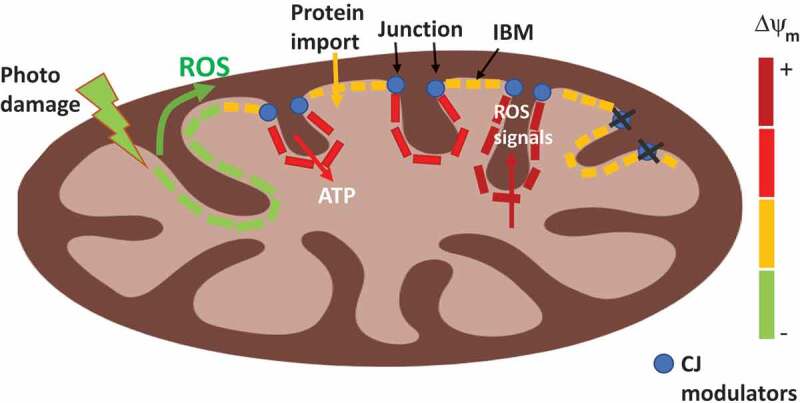Figure 1.

Individual cristae in a mitochondrion are functionally autonomous. The difference in membrane potential generated by the proton gradient (ΔΨm) in each crista is color-coded with red to green ratio: red-hyperpolarized, yellow-polarized, green-depolarized. Cristae junction (CJ) modulators are depicted as blue dots. Individual cristae and the inner boundary membrane (IBM) in one mitochondrion can have different ΔΨm, as ΔΨm might be serving distinct mitochondrial processes: ATP synthesis, reactive oxygen species (ROS)-mediated signaling or protein import. Deleting CJ modulators reduce the difference in ΔΨm between crista and the IBM. The wave-like pattern of depolarization-induced by photodamage could be explained by a diffusible signal (ROS) and/or self-propagating signal (lipid peroxides) that causes depolarization in distal sites. The need for such a diffusible/self-propagating signal reflects the need to sense unrepairable damage and send irreversibly injured mitochondria to mitophagy.
